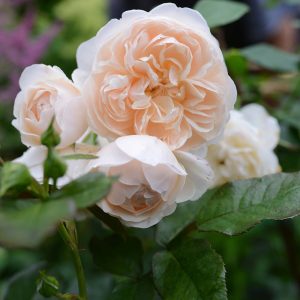Description
Geraniums, not to be confused with the common bedding pelargoniums, are a diverse group of flowering perennials that are easy to grow and care for. With delicate-looking flowers and finely divided leaves, they make a charming addition to any garden. These plants produce a profusion of blooms in a range of colors, including pink, purple, blue, and white, from late spring to early summer. Some varieties may rebloom later in the season. Geraniums are versatile plants that can be used in many garden settings, from borders and containers to rock gardens and cottage gardens. They prefer well-drained soil and full sun to partial shade. Deadheading spent blooms can encourage repeat flowering and keep the plants looking neat and tidy.
Key Facts
- Common Name(s):Geranium ‘Rozanne’
- Hardiness:Fully hardy
- How big will I get? Geranium ‘Rozanne’ can grow to a height of 0.6m and a spread of 0.6m.
- Did You Know That:The name Geranium comes from the Greek word for crane, as the ovary and stigma can look like the head and beak of a crane.
Plant Calendar
A rough guide to how this plant will change through the year.
| Jan | Feb | Mar | Apr | May | June | July | Aug | Sept | Oct | Nov | Dec | |
| Flowering Time |  |
 |
 |
 |
||||||||
| Foliage Colour |  |
 |
 |
 |
 |
 |
 |
 |
 |
| J | F | M | A | M | J | J | A | S | O | N | D |
 |
 |
 |
 |
||||||||
 |
 |
 |
 |
 |
 |
 |
 |
 |
Care Guide

Soil Requirements
Geranium ‘Rozanne’ is a versatile plant and can cope with wet or drier soils, but prefers there to be decent drainage. This plant can grow in soil with a wide range of pH levels, it is not picky about the pH level of the soil.

Best Position
Geranium ‘Rozanne’ can handle either an exposed or a sheltered position and can cope with either full sun or partial shade.

Maintenance
Geranium ‘Rozanne’ can be cut right back after first flush of flowers, this can encourage the plant to flower again later in the season.

Pest, Diseases and Wildlife
Geranium ‘Rozanne’ can have problems with vine weevil, capsid bigs and sawfly, it can be vulnerable to certain diseases such as downy mildews and powdery mildews. It is also known to attract bees, butterflies and other pollinators. It is not considered to be toxic.





